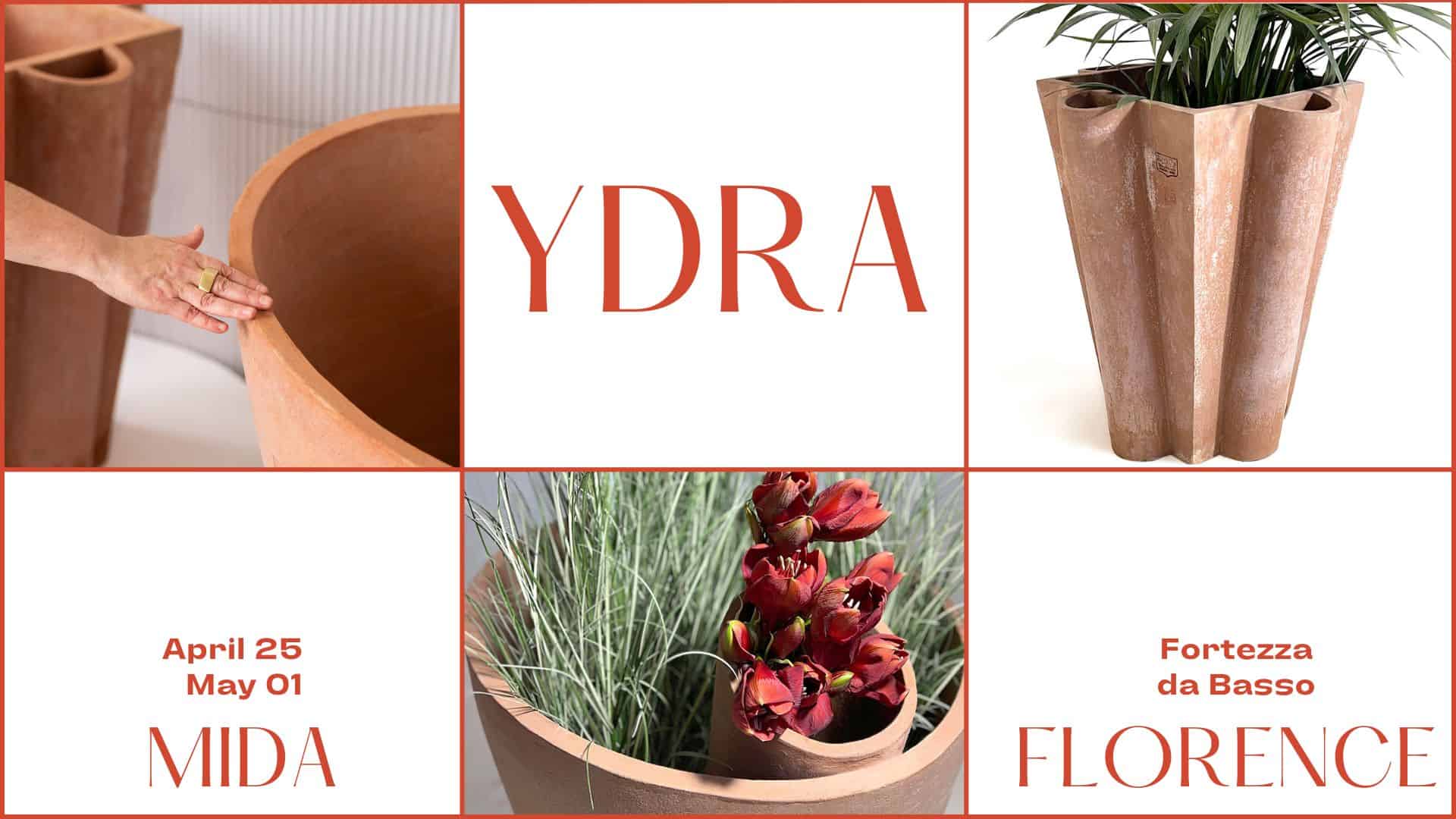
High Craftsmanship, Innovation, Sustainability and Design for the exhibition ‘Con.te.ne.re from the object to the body. Variants of scale in Craftsmanship and Design’.
Poggi Ugo Terrecotte returns to the Italian craft and design scene with its participation in the exhibition ‘Con.te.ne.re dall’oggetto al corpo. Variants of Scale in Craftsmanship and Design’, promoted by Fondazione CR Firenze, realised by OMA, Associazione Osservatorio dei Mestieri d’Arte, and curated by ADI Associazione per il Disegno Industriale, in the exhibition context of the Fortezza da Basso in Florence, on the occasion of the 89th MIDA, from April, 25th to May, 1st 2025.
The event takes place in the historic Sala della Volta in the Quartieri Monumentali. It is an important stage for the presentation of excellent craftsmanship combined with contemporary design innovations.
The star collection will be ‘Ydra‘, designed by Sabrina Sguanci Baroni and already presented in Milan during the Fuori Salone 2024.
This special collection, for this new exhibition occasion, interprets the concept of ‘containment‘ in a technical and symbolic key, analysing the multiple aspects that make the relationship between container and content a crucial element in design.
The objects on display go beyond the practical function of enclosing objects or liquids: they become custodians of memory, symbols of hospitality and vehicles of a design philosophy oriented towards sustainability and resource efficiency.
In fact, Ydra pots are designed to “house, guard and protect” the plant they contain, through the slow and gradual release of water, thanks to the intrinsic properties of terracotta, known for its natural porosity.
The three models that make up this innovative collection are:
Large Ydra Cono: characterised by a cylinder inside the pot that, with its slanting cut, not only has an undeniable aesthetic impact, but also regulates the release of water, promoting a calibrated and gradual release of moisture.
Large Ydra Flower: Five water reservoirs arranged like petals surround the heart of the vase, creating a striking and functional visual effect.
Large Ydra Quadro: Four half-cylinders strategically positioned outside the central body define the water reservoirs, emphasising the synergy between aesthetics and functionality.
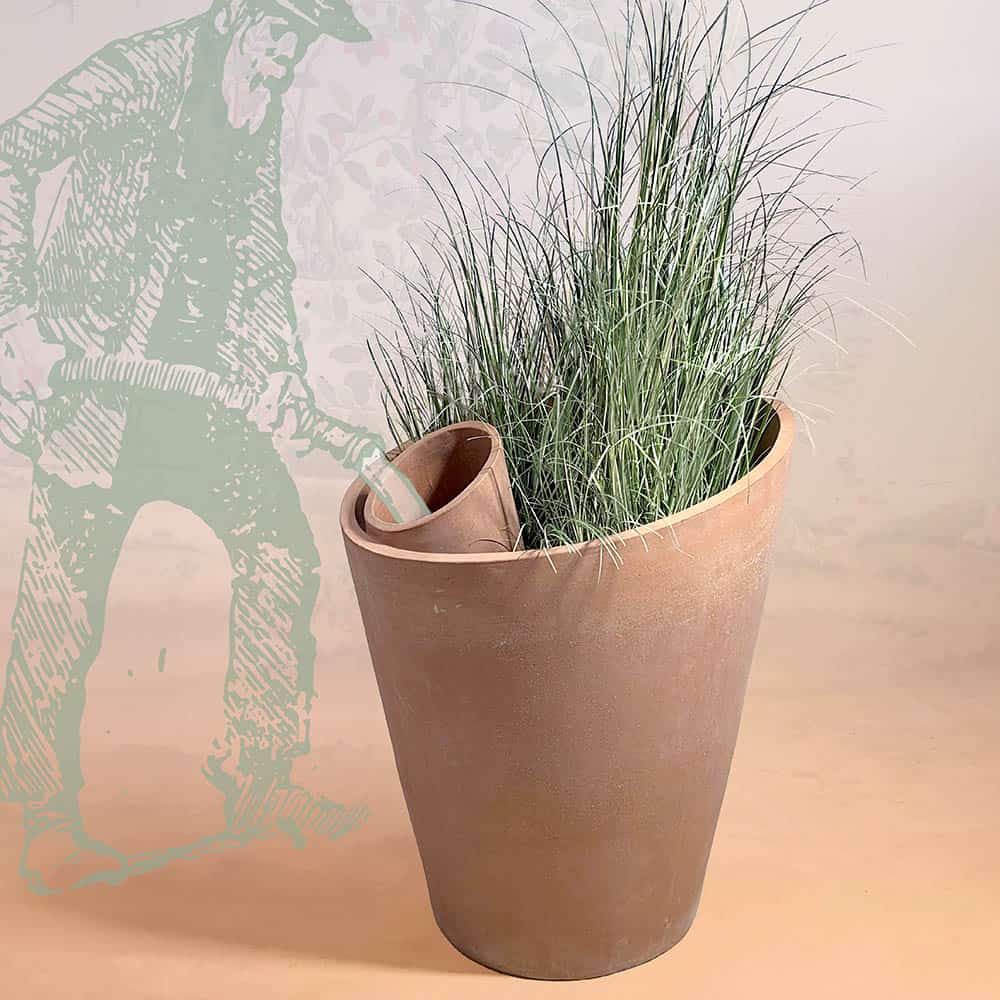
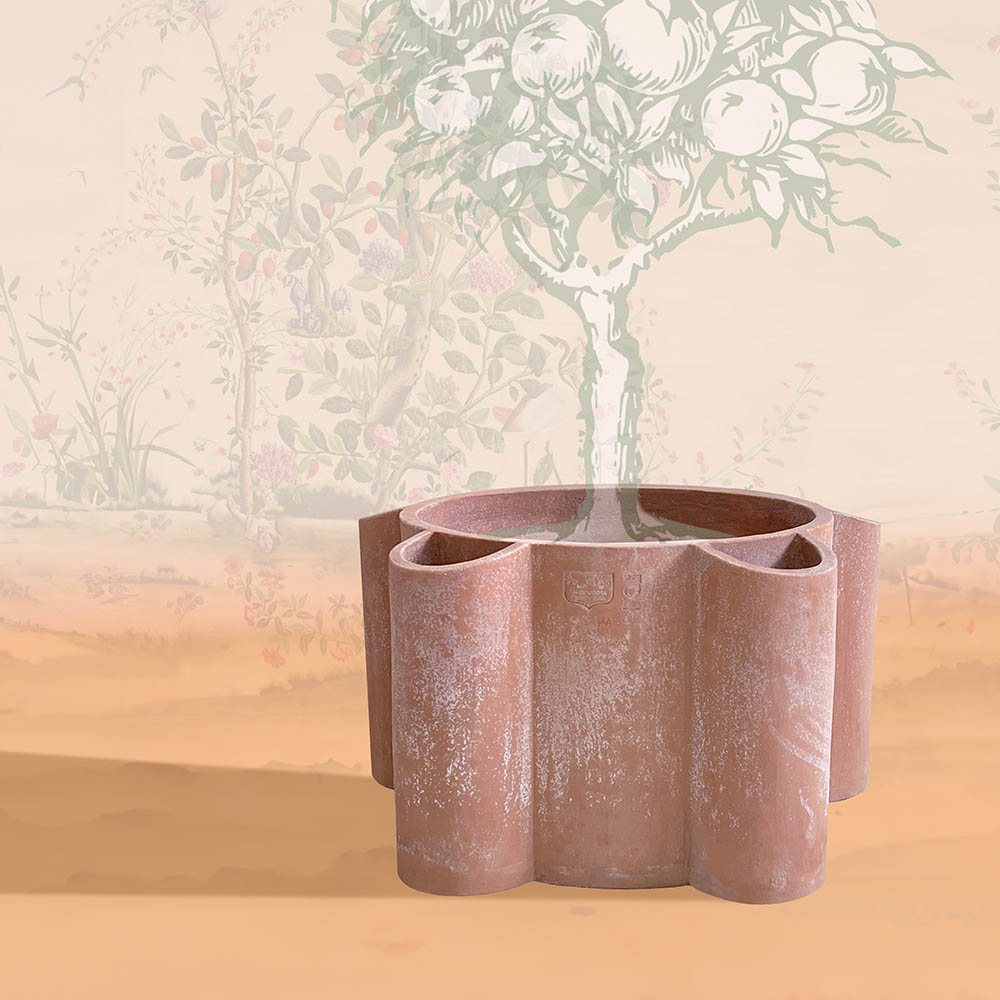
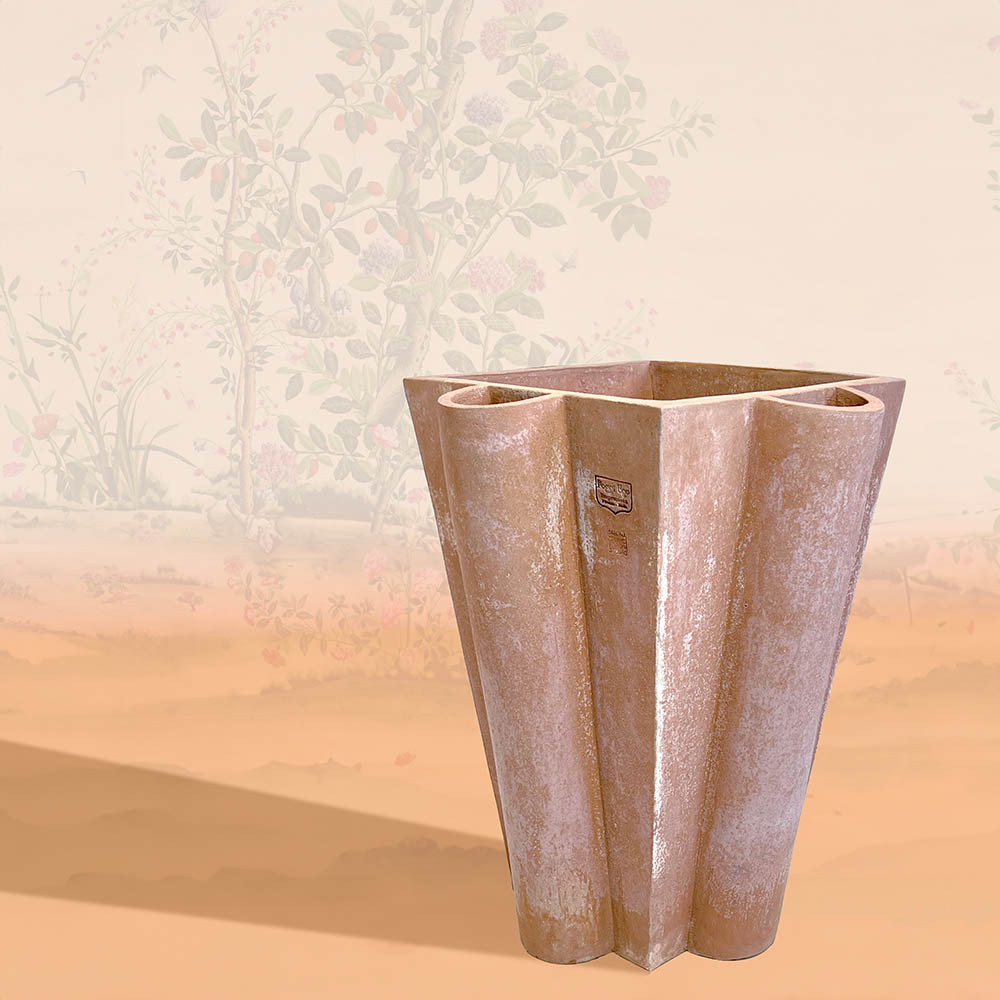
The large Ydra vases are born from the meeting of conscious design and earth-rooted craftsmanship.
Made from our prized Impruneta clay, renowned for its exceptional technical properties, these containers exploit the natural qualities of the raw material to create a controlled irrigation system ideal for plant health.
Its design, simple but studied to the smallest detail, is not only aesthetic: it is a real strategy for sustainable water management. In a context where temperatures continue to rise and landscaping requires ever more intelligent solutions, Ydra proposes a concrete, simple and historically rooted response.
A strong reference to circularity and use is found in the reinterpretation of the ancient terracotta ‘showers’, elements present in architecture since Roman times and used to collect rainwater.
Today, these details return in a contemporary key, transformed into both functional and poetic elements.
Ydra is not just a collection of pots, it is the symbol of a vision: a way of cultivating, designing and inhabiting green spaces with respect for time, materials and the environment.
The choice of pre-industrial techniques, attentive to the natural rhythm of production and the value of handicraft, confirms Poggi Ugo‘s commitment to preserve and innovate at the same time.
In a world in urgent need of sustainable solutions, Ydra is a solid, functional and conscious presence: an ally for those who design greenery with care, style and vision.

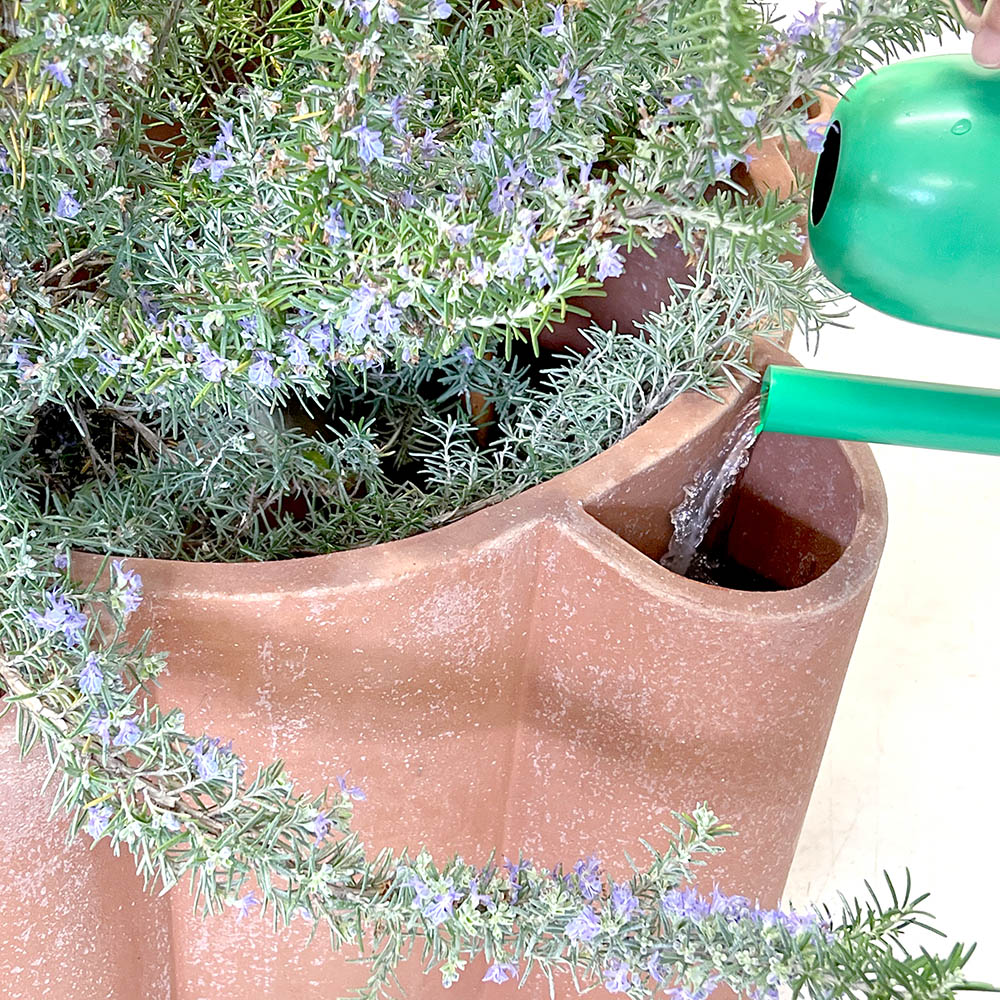

The three pots in the ‘Ydra‘ collection, the result of a study aimed at optimising resources, conserve water reserves which are gradually released to the plants thanks to the characteristic porosity of Impruneta clay.
Participating in the exhibition is not only an opportunity to showcase a high quality product, but also a moment to reflect on the value of traditional craftsmanship and the role that innovative design can play in addressing today’s environmental challenges.
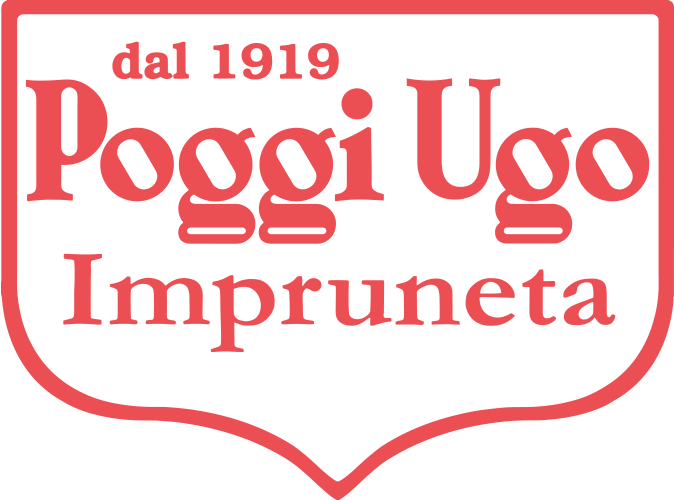
Poggi Ugo Terrecotte srl
società unipersonale
Via Imprunetana per Tavarnuzze n.16
50023 Impruneta – Firenze – Italia
Tel. +39 0552011077
info@poggiugo.it
P.IVA – C.Fisc: (IT) 05638490481
R.E.A: 562450 Firenze
Albo Lavorazioni Artistiche e Tradizionali n. 173862
Capitale sociale: euro 110,000,00 i.v.